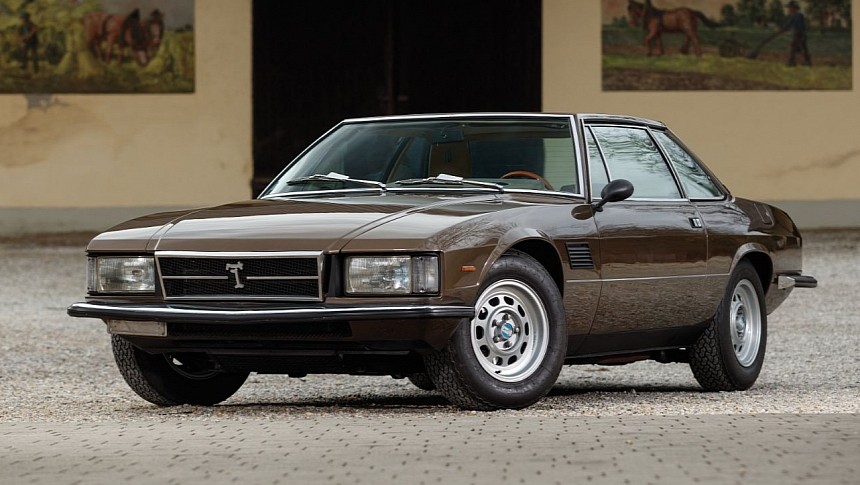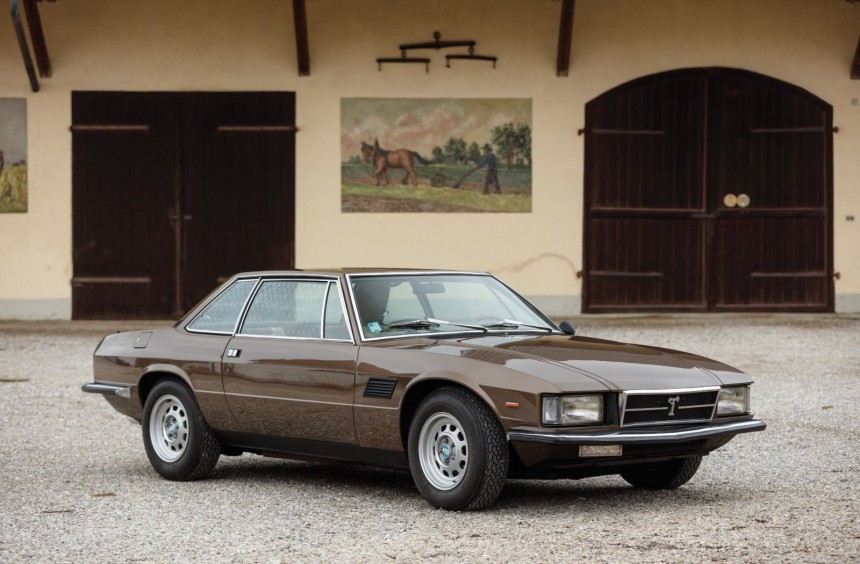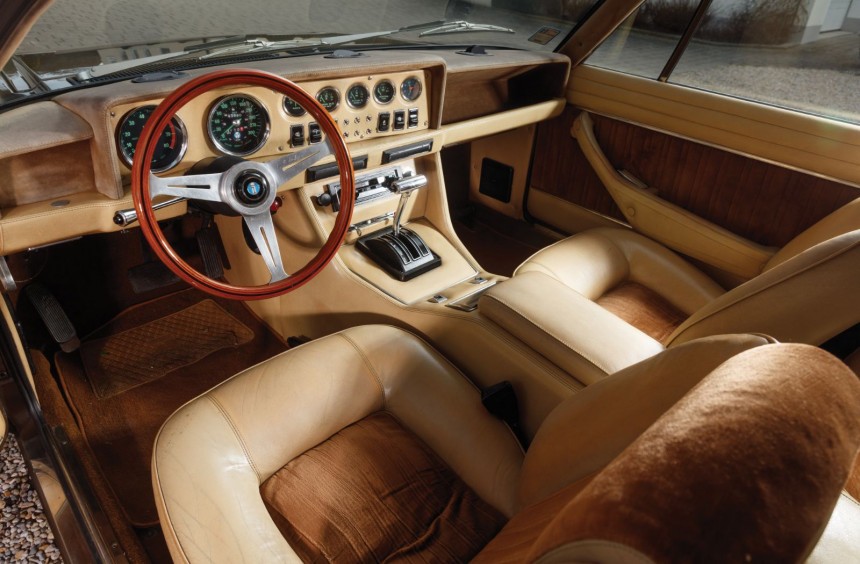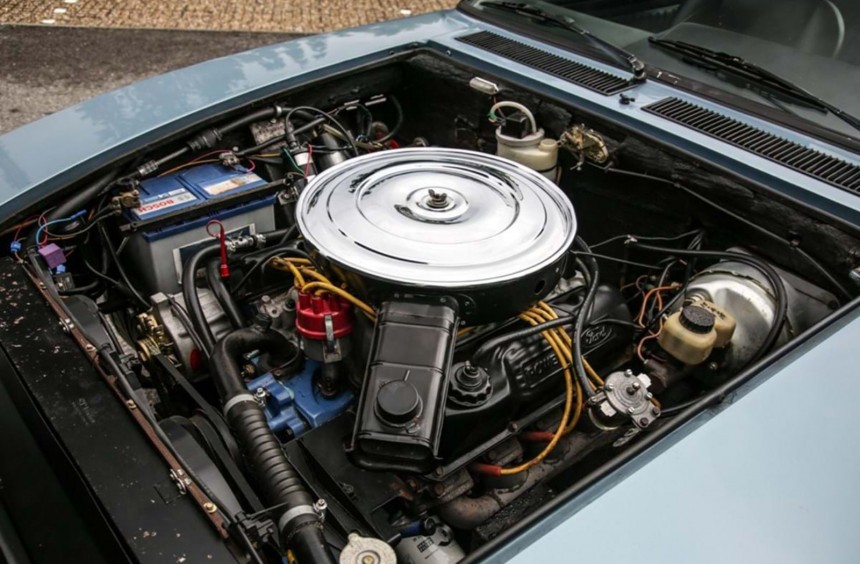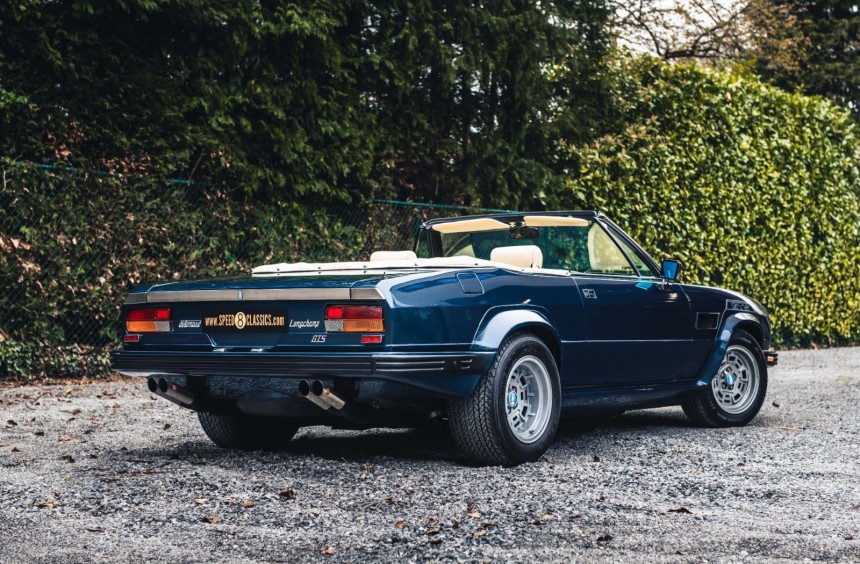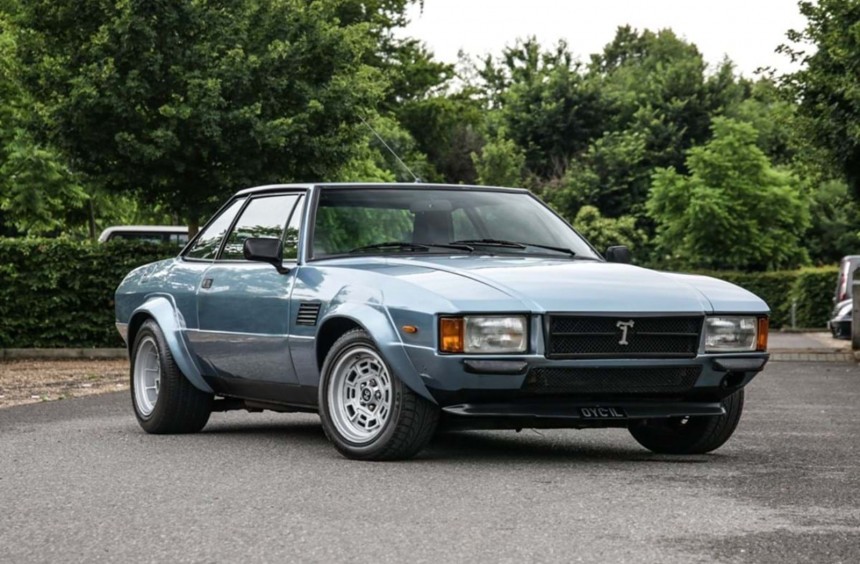Built to compete against the Mercedes-Benz C107 SLC, the Longchamp was a luxurious Italian 2+2 that hid a powerful Ford small-block V8 under the hood.
Established in 1959 by former race driver Alejandro de Tomaso, the small Italian company that bored the Argentine-born founder's name initially produced race car prototypes.
During the sixties, it started developing road cars, and by the mid-seventies, the company had established itself in Europe and the US, thanks to its partnership with Ford.
In recent years, the carmaker has made a comeback, but despite its breathtaking P72 modern supercar, the most famous De Tomaso ever built remains the mid-engine Pantera.
Apart from sports cars like the Pantera and its predecessor, the Mangusta, De Tomaso built another interesting model during its heyday, one aimed at customers who wanted a different kind of highway cruiser.
In 1971, the small Italian carmaker introduced the Ford V8-powered Pantera as a cheaper, more reliable alternative for mid-engine sports cars from more established brands.
In addition, the company decided to enter the European luxury sedan market with an all-new four-door called Deauville.
However, with the highly-publicized unveiling of the Mercedes-Benz R107 SL roadster (and the subsequent C107 SLC coupe), Alejandro de Tomaso instructed its staff to build a 2+2 grand tourer that could rival the German model.
A year later, at the Turin Motor Show, the new model called Longchamp made its debut.
Based on the Deauville's underpinnings, it donned a new notchback coupe body designed by Carrozzeria Ghia's Tom Tjaarda.
The exterior design of the Longchamp was loosely based on a 1969 concept dubbed Marica that Tom Tjaarda designed for Lancia.
Though it doesn't look particularly impressive today, the boxy appearance of the grand tourer with its sharp lines was a drastic departure from the usual late-sixties, early-seventies designs.
Back then, some went as far as calling the 2+2 more attractive than the Merc it was meant to rival.
Even a decade after its introduction, the car still looked modern, so mainly thanks to its appearance, it managed to survive on the market until the late eighties.
Despite its novel design, the initial Longchamp used some existing components from other carmakers. These include the headlights borrowed from the European Ford Granada or the Alfa Romeo 1750/2000 taillights.
Inside, The steering wheel and gear shifter (on automatic gearbox versions) were also borrowed from Ford, while part of the dashboard came from the Pantera.
Nevertheless, the ultra-comfortable front seats and abundance of premium leather upholstery made the Longchamp's interior a wonderful place to be in. It oozed luxury and quality, which is what buyers expected from a high-end grand tourer.
Underneath the new body, the Longchamp inherited the platform from its four-door sibling. With fully independent suspension on both axles, disc brakes behind all four wheels, and power-assisted steering, the chassis was advanced for its era.
Therefore, the car delivered a smooth and crisp handling that made it a joy to drive.
The driving experience was exponentially improved by the 351-ci (5.8-liter) Cleveland V8 sourced from Ford.
The same unit that powered De Tomaso's other models, the small-block was initially rated at a healthy 326 hp. Later in the seventies, performance dropped to 266 hp to keep emissions at bay, but during the early eighties, it rose to a respectable 286 hp.
It's worth noting that De Tomaso initially imported the Cleveland units from the Ohio plant. However, after production ceased in the US, the V8s were sourced from Ford's Australian branch, where the engine was assembled.
Throughout its lifespan, the grand tourer was available with a standard Ford C-6 three-speed automatic. Though a very capable five-speed manual was offered as a no-cost alternative, the vast majority of customers opted for the automatic gearbox.
With impeccable road manners, ample trunk space, and a powerful V8 under the hood, the luxurious Longchamp was the ideal long-journey cruiser.
However, since De Tomaso focused most of its efforts on the Pantera, the grand tourer didn't benefit from the same marketing campaign.
Furthermore, unlike the mid-engine sports car, the Longchamp was never officially sold in the US.
Despite introducing a facelifted model, a sportier GTS version, and a convertible, the Ford-powered GT never posed a challenge to Mercedes-Benz's SLC and SL.
The company made another effort to cash in on the Longchamp project by using its underpinnings to develop the Kyalami, Maserati's first production model introduced under De Tomaso's ownership.
From 1972 to 1989, the company produced a little over 400 Longchamps. Of those, most were standard two-door coupes.
Nevertheless, the model gained a cult following among those who wanted a grand tourer that mixed Italian luxury and road manners with American power and reliability.
Even today, when its looks are unappealing to many enthusiasts, the Longchamp still enjoys a cult following.
Considered one of the most underrated grand tourers of its era, the rare model's current average value stands at $48,225, according to classic.com.
That figure can go up by more than 50% for a convertible or a GTS, the latter being highly sought-after for its flared fenders and wider wheels borrowed from the Pantera.
Even though it was never a marketing success, and few remember it today, the De Tomaso Longchamp remains one of the best grand tourers from the Malaise era.
For more insight on this fascinating model, we recommend watching the following retro review by MotorWeek.
During the sixties, it started developing road cars, and by the mid-seventies, the company had established itself in Europe and the US, thanks to its partnership with Ford.
In recent years, the carmaker has made a comeback, but despite its breathtaking P72 modern supercar, the most famous De Tomaso ever built remains the mid-engine Pantera.
Apart from sports cars like the Pantera and its predecessor, the Mangusta, De Tomaso built another interesting model during its heyday, one aimed at customers who wanted a different kind of highway cruiser.
A rival for the Mercedes-Benz SLC
In addition, the company decided to enter the European luxury sedan market with an all-new four-door called Deauville.
However, with the highly-publicized unveiling of the Mercedes-Benz R107 SL roadster (and the subsequent C107 SLC coupe), Alejandro de Tomaso instructed its staff to build a 2+2 grand tourer that could rival the German model.
A year later, at the Turin Motor Show, the new model called Longchamp made its debut.
Based on the Deauville's underpinnings, it donned a new notchback coupe body designed by Carrozzeria Ghia's Tom Tjaarda.
Modern styling and a luxurious interior
Though it doesn't look particularly impressive today, the boxy appearance of the grand tourer with its sharp lines was a drastic departure from the usual late-sixties, early-seventies designs.
Back then, some went as far as calling the 2+2 more attractive than the Merc it was meant to rival.
Even a decade after its introduction, the car still looked modern, so mainly thanks to its appearance, it managed to survive on the market until the late eighties.
Despite its novel design, the initial Longchamp used some existing components from other carmakers. These include the headlights borrowed from the European Ford Granada or the Alfa Romeo 1750/2000 taillights.
Inside, The steering wheel and gear shifter (on automatic gearbox versions) were also borrowed from Ford, while part of the dashboard came from the Pantera.
Nevertheless, the ultra-comfortable front seats and abundance of premium leather upholstery made the Longchamp's interior a wonderful place to be in. It oozed luxury and quality, which is what buyers expected from a high-end grand tourer.
An advanced chassis combined with a potent American V8
Therefore, the car delivered a smooth and crisp handling that made it a joy to drive.
The driving experience was exponentially improved by the 351-ci (5.8-liter) Cleveland V8 sourced from Ford.
The same unit that powered De Tomaso's other models, the small-block was initially rated at a healthy 326 hp. Later in the seventies, performance dropped to 266 hp to keep emissions at bay, but during the early eighties, it rose to a respectable 286 hp.
It's worth noting that De Tomaso initially imported the Cleveland units from the Ohio plant. However, after production ceased in the US, the V8s were sourced from Ford's Australian branch, where the engine was assembled.
Throughout its lifespan, the grand tourer was available with a standard Ford C-6 three-speed automatic. Though a very capable five-speed manual was offered as a no-cost alternative, the vast majority of customers opted for the automatic gearbox.
It failed to pose a threat to its German rival
However, since De Tomaso focused most of its efforts on the Pantera, the grand tourer didn't benefit from the same marketing campaign.
Furthermore, unlike the mid-engine sports car, the Longchamp was never officially sold in the US.
Despite introducing a facelifted model, a sportier GTS version, and a convertible, the Ford-powered GT never posed a challenge to Mercedes-Benz's SLC and SL.
The company made another effort to cash in on the Longchamp project by using its underpinnings to develop the Kyalami, Maserati's first production model introduced under De Tomaso's ownership.
From 1972 to 1989, the company produced a little over 400 Longchamps. Of those, most were standard two-door coupes.
Nevertheless, the model gained a cult following among those who wanted a grand tourer that mixed Italian luxury and road manners with American power and reliability.
The De Tomaso Longchamp today
Considered one of the most underrated grand tourers of its era, the rare model's current average value stands at $48,225, according to classic.com.
That figure can go up by more than 50% for a convertible or a GTS, the latter being highly sought-after for its flared fenders and wider wheels borrowed from the Pantera.
Even though it was never a marketing success, and few remember it today, the De Tomaso Longchamp remains one of the best grand tourers from the Malaise era.
For more insight on this fascinating model, we recommend watching the following retro review by MotorWeek.
